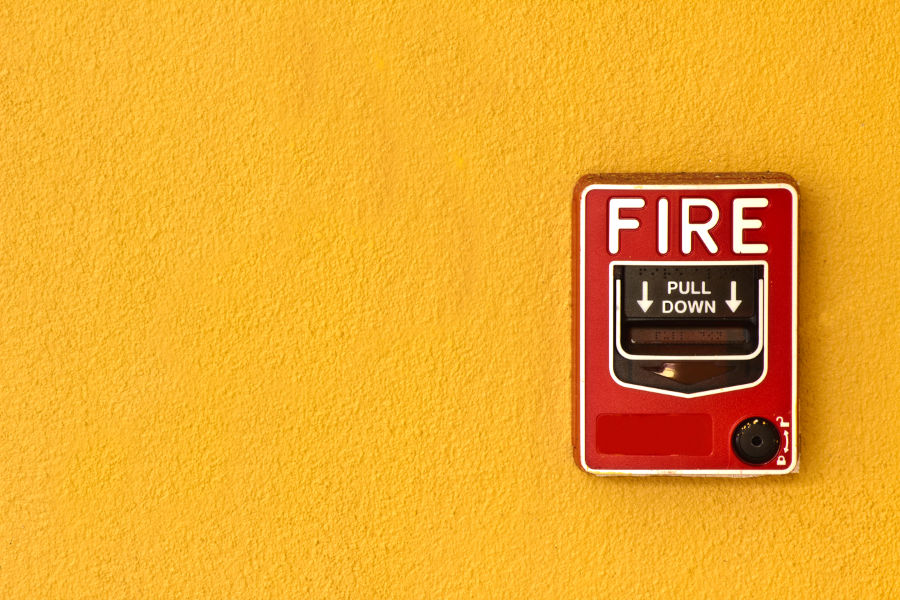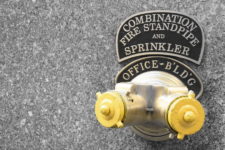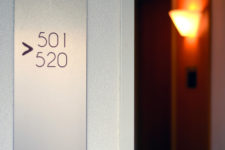Following a devastating Bronx fire, the City Council has released a new package of regulations aimed at preventing the spread of fires throughout a building (in addition to minimizing underlying fire causes).
Here’s what you need to know:
(click on the blue bar to get more details about each specific law!)
According to Int. No 602 (Local Law number forthcoming), “All doors providing access to interior corridors or stairs in occupancy groups R-1 and R-2 shall be self-closing or equipped with a device that will ensure closing after having been opened by July 31, 2020.” Additionally, the rule states that “it shall be the duty of the owner of a multiple dwelling, which is required to be equipped with self-closing doors pursuant to section 28-315.10, or any other applicable law, to keep and maintain such doors in good repair.”
Adding on, the rule states, “Any owner required to keep and maintain self-closing doors pursuant to subdivision a of this section who fails to keep or maintain such doors shall be liable for a class C immediately hazardous violation. Notwithstanding any other provision of law to the contrary, the time within which to correct such violation shall be twenty-one days after service of the notice of violation.”
Sponsoring Councilman Joe Borelli is quoted in the NY Daily News, mentioning, “This is a device that costs $24…and it’s something that would prevent fire and smoke from exiting one unit and going into others.” Given the text of the law, it appears that HPD (as opposed to the FDNY) has jurisdiction over promulgation and enforcement here.
Per the law, “The department shall require owners of multiple dwellings to post a notice in conspicuous locations indicating that those escaping a fire should close all doors behind them.” As of yet, there’s no required language or sample post from the FDNY – that’s likely to change. Stay tuned, as this rule likely goes into effect before the end of the year (120 days after the mayor’s signature, to be specific).
For Group R Occupancies:
On and after January 1, 2021, smoke alarms and smoke detectors shall not be installed or replaced in an individual dwelling or sleeping unit, including dwellings or units in prior code buildings, within an area of exclusion determined by a 20 foot (6.0 m) radial distance along a horizontal flow path from a stationary or fixed cooking appliance, unless listed in accordance with the 8th edition of UL 217 for smoke alarms or the 7th edition of UL 268 for smoke detectors.
Future installations for Occupancy Groups other than R:
Smoke alarms and smoke detectors shall not be installed within an area of exclusion determined by a 10 ft (3.0 m) radial distance along a horizontal flow path from a stationary or fixed cooking appliance, unless listed for installation in close proximity to cooking appliances. Smoke alarms and smoke detectors installed between 10 ft (3.0 m) and 20 ft (6.1 m) along a horizontal flow path from a stationary or fixed cooking appliance shall be equipped with an alarm-silencing means or use photoelectric detection. On and after January 1, 2021, the requirements of this section shall apply only to occupancy groups other than group R.
There is an exception – alarms or detectors using photoelectric detection shall be permitted for installation “at a radial distance greater than 6 ft” from any stationary or fixed cooking appliance under the following two conditions:
- The kitchen or cooking area and adjacent spaces have no clear interior partitions or headers, and;
- The 10ft area of exclusion would prohibit the placement of a smoke alarm or smoke detector required by other sections of this code.
You can read more about this regulation here.
Owners of multiple dwelling units (other than dwelling units owned in condominiums or co-ops as the primary residence) shall provide stove knob covers for each knob located on the front of each gas powered stove to tenants where the owner knows or reasonably should know a child under the age of 6 resides. An exception is made when the owner has documented proof that no available stove knob cover is compatible with the stove knobs in a unit.
Here’s the most interesting part: per the law, “Such owner shall provide an annual notice to each tenant of a unit regarding the owner’s obligation to provide stove knob covers pursuant to subdivision a of this section. Such notice shall inform the tenant of his or her option to refuse stove knob covers.”
Tenants can then respond in writing if they refuse stove knob covers. If the tenant does not refuse in writing, the owner must make knob covers available to the tenant.
Owners must keep records of all written refusal notifications, all attempts to provide stove knob covers to the tenant, units where stove knob covers were made available, and tenants who have requested stove knob covers. This law goes into effect 180 days from signing – that means it’s possible that it may be a requirement during annual safety notice mailing season.
For now, it’s not clear whether HPD will make this a part of the standard safety notice mailings (for lead paint and window guards). That said, it’s worth staying tuned on this update – it may impact residential owners and managers sooner than you think. Read the body of the law here.
According to the city council, the FDNY must now make a “good faith effort” to directly contact owners and occupants of R-2 buildings, ensuring that the appropriate procedures, resources, and educational materials are in place. Complying with this rule may include providing notices, materials, and trainings.
As a follow-up, the FDNY will provide a report to the Council describing their activities under this rule, starting January 31st of next year and continuing annually thereafter (though a repeal note may limit these reports to 5 years). You can read more in the full body of the law here.
In conjunction with the Department of Education, the FDNY will develop and implement a plan for educating families about fire safety and prevention. Similarly to residential building training, a report will be sent to the Mayor and Council each January with updates on the activities being done under this law. Read more here.
With support from the Mayor’s Office of Emergency Management and the Mayor’s Office for People with Disabilities, the FDNY will create a planning checklist for residents to assist with specialized evacuation plans for those with disabilities or limited mobility. The list will include available evacuation devices and recommended practices, according to the final version of the law.
Stay tuned for more details about promulgation and enforcement, coming before the end of the year (if not sooner)!
Related Articles
About the Author
Kristen Hariton
Kristen Hariton is the Vice President, Product Engagement at SiteCompli, focused on exploring new solutions and innovations in property operations tech. When she's not sharing the latest industry trends, changes, and updates, she's planning her next adventure to Walt Disney World.




